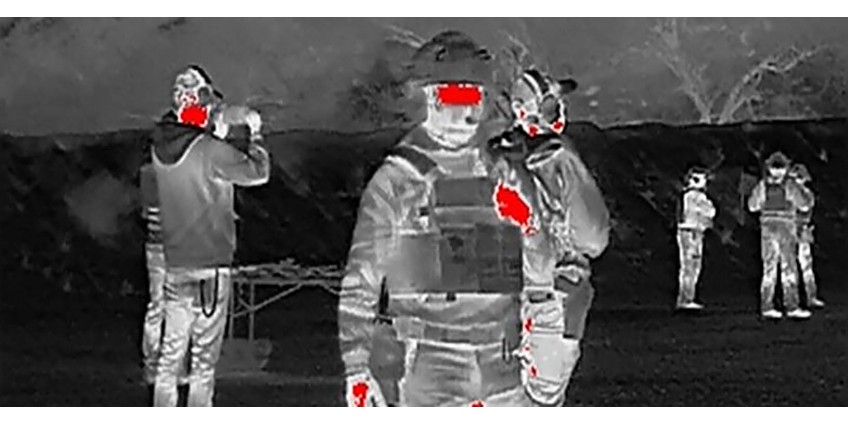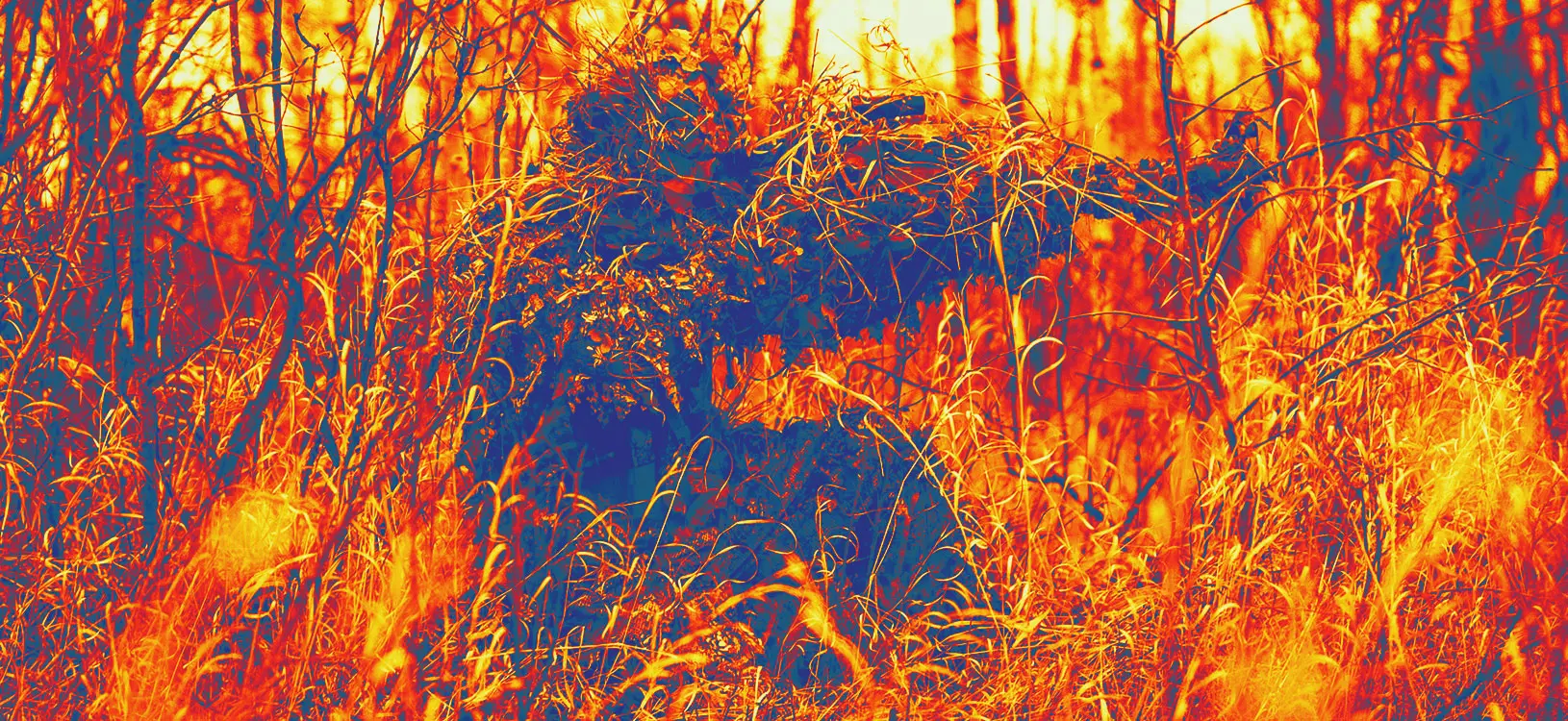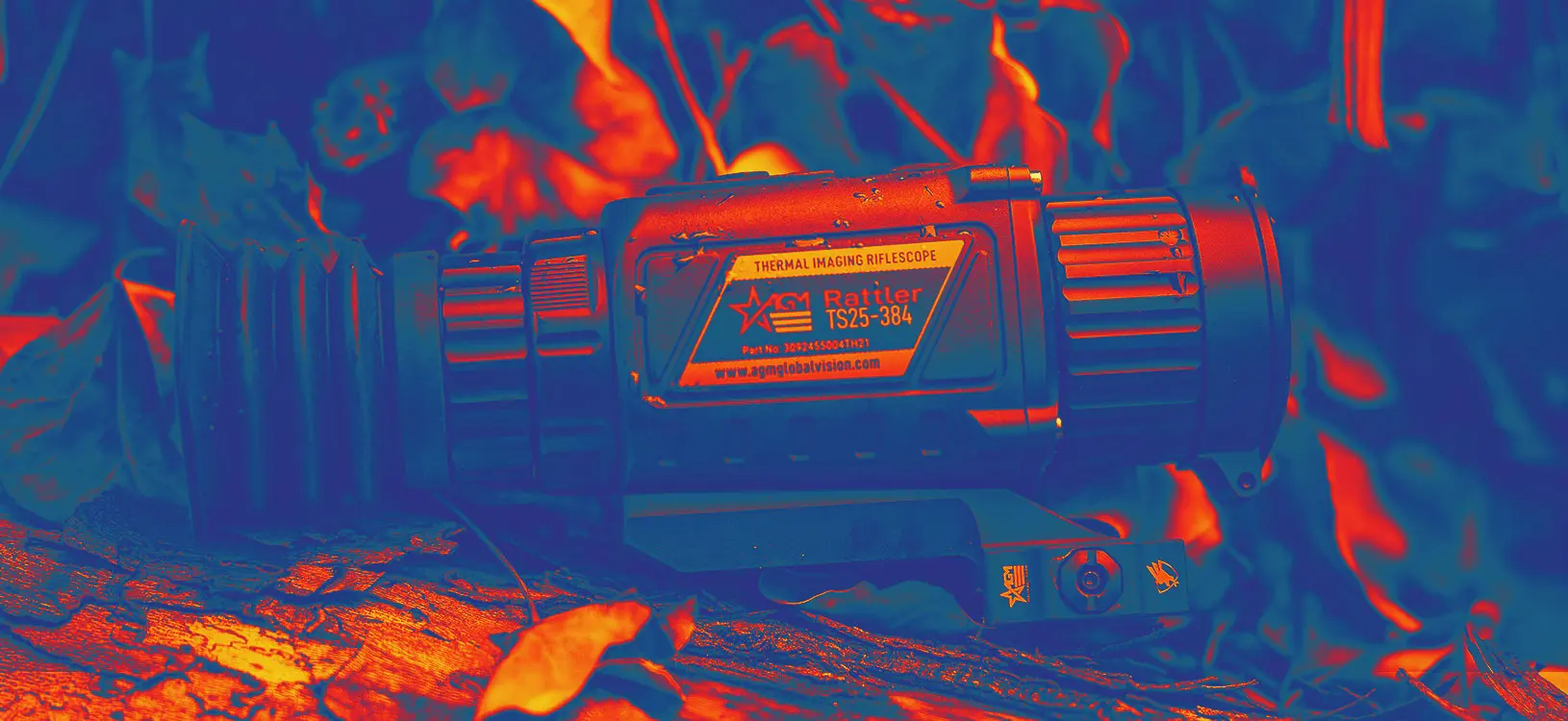
This product is not exportable outside the United States.
By adding this item to cart, you agree and acknowledge the Export Policy and confirm that you are a person in the United States with no intentions to illegally export the device.
This product is not exportable outside the United States.
By adding this item to cart, you agree and acknowledge the Export Policy and confirm that you are a person in the United States with no intentions to illegally export the device.


0

0


The best way to hide from a thermal imaging camera is to stand behind it.
The biggest problem here is understanding that you are being watched by a thermal imaging camera and that you need to hide from it somehow. But if you know exactly how to hide, then you should become invisible to the thermal imaging camera. In other words, you need to break your contour, get lost in the warm spots, and be stationary because targets very often stand out in terms of movement.
Another advantage is distance. The resolution drops rapidly, preventing the thermal imaging camera operator from identifying a cloudy spot as a human being.
As with anything important, you should start with the basics. In our context, we would have to focus on the structure and principles of the thermal imaging camera, but we're not talking about lectures, and you don't need to get a degree, so don't go into details so much.
In short, a thermal imaging camera is an electronic observation device that builds an image of the temperature differences in the observed space area. In other words, a thermal imaging camera can distinguish between "warm" and "cold" objects. The device captures thermal radiation and does not require illumination of observation objects to create an image.
If a person "warms up" unevenly, you will see it too. What will a thermal imaging camera show? It will show you the contour of the surface temperature. Simply put, it will color warmer skin areas. Most of the time, it's not visible under the layer of clothing. It all depends on the high heat conductivity of the material from which the clothes are sewn. However, thermal imaging cameras with higher matrix resolution (AGM ASPTM25-384, for example) will show how the body heat is transferred to the clothes.
So, is it possible to hide from a thermal imaging camera? Let's sort it out!

An IR camera is a modern device that lets you see at night. Unlike classic night vision, it uses infrared radiation, not visible light, to form an image. Due to this feature, it has a wide range of applications and is in demand in various fields of activity.
The IR camera has the most straightforward operating principle. Initially, the device detects heat sources emanating from all heated bodies. Then, the collected "material" is converted into an electronic signal, which the camera's processor processes at the next stage. The latter analyzes the received electronic signal and builds a color map based on a unique algorithm. This process makes it possible to obtain an image on which various heat signatures and outlines of objects will be visible.
Like any other device, the thermal imaging camera is not ideal. Technical disadvantages are typical for a thermal device. If much heat enters the lens, it can be "blinded". This can even cause physical damage to the sensor. Various sources of intense heat generation, such as fires, welding arcs, termite checkers, etc., pose a potential hazard to the thermal imaging camera, making it difficult to detect other targets that fall into the lens field of view.
It also makes sense to create a false target contour to blur the silhouette of a real object.
We are often asked whether a thermal imaging camera sees through trees and bushes. It does, but not everything. Branches, poles, and other hard materials do not break through the eyes of the thermal instrument, but you can see what is in between. Here, too, the vital characteristics of the device and, of course, the degree of growth of the shrubs come to the fore.
To hide from the thermal imaging camera, choose one of the materials that does not conduct heat or reflect it. As you have already understood from the previous paragraphs, you can always use a house or thick corn thickets as a shelter. But how can you be in the open terrain?
Glass. This material works with a thermal imaging camera as a mirror. If you take a thermal imaging device and come close to a window, you will only see your thermal reflection.

Foil. This option is not as effective as the first. After all, many thermal imaging cameras will see the foil as the opposite of a warm object. However, you will not be able to recognize a person under the foil layer.
New technologies. Recently, scientists have invented a new type of protective suit, the principle of which can be compared to a chameleon. The temperature of this suit can be adjusted to the environment. Thus, the boundary between a warm-blooded object and an excellent background disappears.
To reduce the probability of detection with a thermal imaging camera, it is necessary to eliminate or reduce heat radiation from your body. If you don't have a specialized uniform, the easiest way is to wear tight pants, a tight jacket, thick gloves, and a multi-layer balaclava. Wear thermal underwear, preferably composite, made of synthetic and natural materials. But it should be remembered that the clothes will warm up in time and be visible to the thermal imaging camera. So that such camouflage will be effective only for a while.
A thick net can help hide you from thermal imagers. You can become virtually invisible by covering yourself with it and throwing leaves or branches into the open areas. Some of the heat from your body will pass through the holes in the net and form randomly scattered hot spots on the thermal imager display. However, it will be tough to determine that they belong to a person.
A black tarpaulin protects a person well from thermal imaging devices. It does not mask the body temperature but reflects it differently than in a normal situation. Due to this, a shapeless hot spot appears on the thermal imager display, making it impossible to distinguish a person's silhouette.
A special IR suit is effective in any external conditions. It works like a space blanket and thermal blankets, which are widely used worldwide. An IR suit is made of unique materials that absorb or reflect heat waves differently than the surrounding space.
If you don't know how to block an infrared camera, use an umbrella to protect against ultraviolet radiation. It is made of materials that reflect heat waves and make you invisible to various thermal imaging equipment.
Thermal imaging devices will be helpful only in cases where you are near objects with a lower temperature than your body. Against the background of cold spots, you will be visible in any external conditions. To become invisible, standing next to a heated stone, wall, car, and other objects will be enough. In this case, your thermal signature will merge with the heated object's signature, making you invisible to thermal imaging optics.

There are several other ways to hide from IR cameras. All of them are extremely simple and accessible in most cases.
To hide from thermal imaging cameras, it is enough to go behind a wall or any similar obstacle. In this case, you can only be detected by the change in surface temperature, which is a consequence of your being behind the wall. This happens extremely rarely, so you can avoid detection in most cases.
Concrete works the same way as any wall. It blocks your body's heat and does not allow thermal image optics to determine your location. Due to its high density, concrete can hide you even in cases where the most sensitive cameras are used, capable of detecting minimal changes in the surface temperature.
Metals provide excellent protection from thermal imaging optics (for example, thermal cameras). They reflect infrared light and do not allow devices to find you. At the same time, do not forget that some metals conduct heat well. Because of this, they can quickly heat up from your body heat and allow thermal imaging equipment to determine your location.
The best way to protect yourself from thermal imaging optics is with aluminum foil. It works like a woolen blanket, blocking body temperature and making someone invisible to even the most modern equipment.
It is safe to say that the best defense is to attack. To avoid getting into the field of vision of a person with a thermal device, you should arm yourself with a thermal imaging camera. This way, you can see your opponent and escape from the pursuit.
To become invisible to a thermal imager, you need to weaken the thermal radiation emitted by your body as much as possible.
To prevent yourself from being detected by a thermal imager, you need to stand behind a barrier that does not let heat through or cover yourself with a material with similar properties.
Aluminum foil blocks infrared radiation best. Metal, concrete, and black tarpaulin also have similar properties.
The thermal imager will not see your heat until clothes have warmed up and become approximately equal to body temperature.
Modified: Nov 01, 2024 | 01:26 pm
Table of contents
Featured Articles
A thermal imaging camera is an electronic observation device, which makes an image of the temperature difference in the observed area of space. But co..
Today, thermal imaging technologies are considered the most versatile night vision optics, as they operate based on a digital matrix, have a wide rang..
If you decide to buy a thermal sight, you should understand the basic functions of the device. In this article, we tell you about the main features of..
If you decide to buy a thermal imaging device, you should take advantage of our advice and expertise...